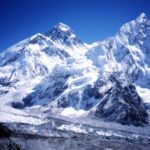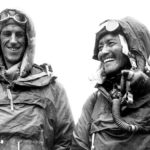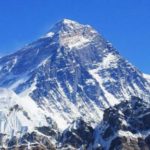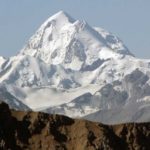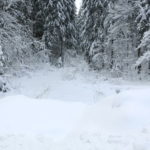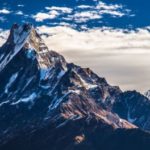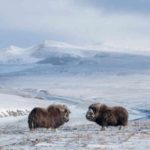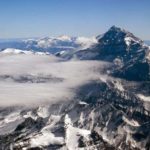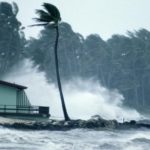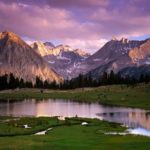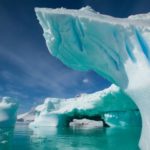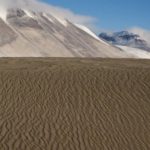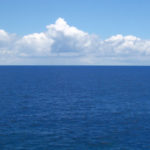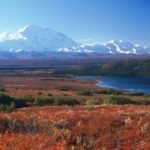Temperature on top of Everest
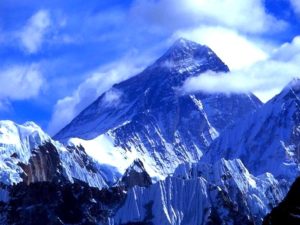 The weather and climate of Mount Everest are the most severe on earth. The temperature at the top of Everest is never above zero, and in January it can fall to – 60 ° C. However, despite the low temperature, the biggest problem faced by climbers who wish to climb is the icy winds of hurricane force.
The weather and climate of Mount Everest are the most severe on earth. The temperature at the top of Everest is never above zero, and in January it can fall to – 60 ° C. However, despite the low temperature, the biggest problem faced by climbers who wish to climb is the icy winds of hurricane force.
During the winter months, the wind speed on Everest can reach more than 285 km / h. And they only subside in the month of May.
What is the weather like on Everest?
In the Himalayas is the third largest concentration of ice on the planet, because of this, and an extremely low temperature with strong winds, this region is often called the third pole.
Everest is located north of the equator and is subject to a typical seasonal pattern in the northern hemisphere. Being on the verge of the influence of the Indian monsoon, bringing moisture and clouds from June to September. The coldest months: December-January. And the best time of conquest is the interval between two seasons: March-May and October-November, when the climate is more or less temperate.
Winter weather on Everest: from November to February, the migration of the northern hemisphere air flow prevails to the south, which leads to strong winds, cold temperatures and snowfall.
Spring to Everest monsoon: March, before the monsoon begins – the ideal time to climb. Rain is infrequent, and daytime temperatures are warm. Many climbers wear T-shirts.
Everest during the monsoon season: summer weather, from June to September, is influenced by the Indian monsoon, which brings frequent rains and overcast days.
Weather on Everest after the monsoon: the autumn season from the end of the monsoon to the cooling in late November is a time to climb with clear days and a comfortable temperature.
The Everest base camp region is quite dry, with a total of about 45 cm of precipitation falling on the base camp. 80% of the precipitation falls during the monsoon season from June to September, and the rest of the year is rather dry. Humidity from the monsoons comes from the south, so the base camp of Everest experiences the effect of the rain shadow, since most of the precipitation falls on the south side of the mountains before the clouds reach the base camp (also, check Interesting facts about Victoria).
High altitude and, as a rule, low temperature act as a controlling influence on the amount of moisture and limit it. This can be seen when comparing the precipitation in the base camp with the precipitation in Lukle reaching 175 cm. The summit of Everest itself receives little precipitation since most of it is subject to strong winds. Large winter snowstorms, although infrequent, are possible, since severe storms in mid-latitudes sometimes cover the region and can deliver more than a meter of snow to the base camp, often catching climbers and travelers by surprise.
Temperature at the top and base camp
The coldest temperatures in the year are observed from December 15 until the end of January.
The temperature at the summit of Everest is on average -37 ° C, while the temperature at the base camp of Everest is -17 ° C.
The temperature rises in the spring months from April to May, although the nights are still very cold. Often, during this period, you can see how climbers wear T-shirts right up to Camp 3.
During May, a short window is formed to climb to the top of the mountain.
The temperature at the top of Everest at this time is -26 ° C.
Wind and cold on Mount Everest
The summit of Everest is the windiest place on earth. From mid-October to early April, the summit is exposed to incessant hurricane winds, the speed of which almost constantly exceeds 120 km / h, which is equivalent to hurricane 1st category. During the winter, the air temperature at the top reaches -60 ° C, and at this temperature, the bare skin freezes almost instantly. Lower wind speed in May and higher temperatures explain the relatively short window for climbing.
The cold wind and low temperatures combined with high elevation make Everest one of the least hospitable places on the planet. In winter, the adjusted temperature of the cooling wind at the top reaches -70 ° C. So the summit of Everest can be compared with the coldest places in the world: Siberia -67.8 ° C and Vostok station in Antarctica -89 ° C.
